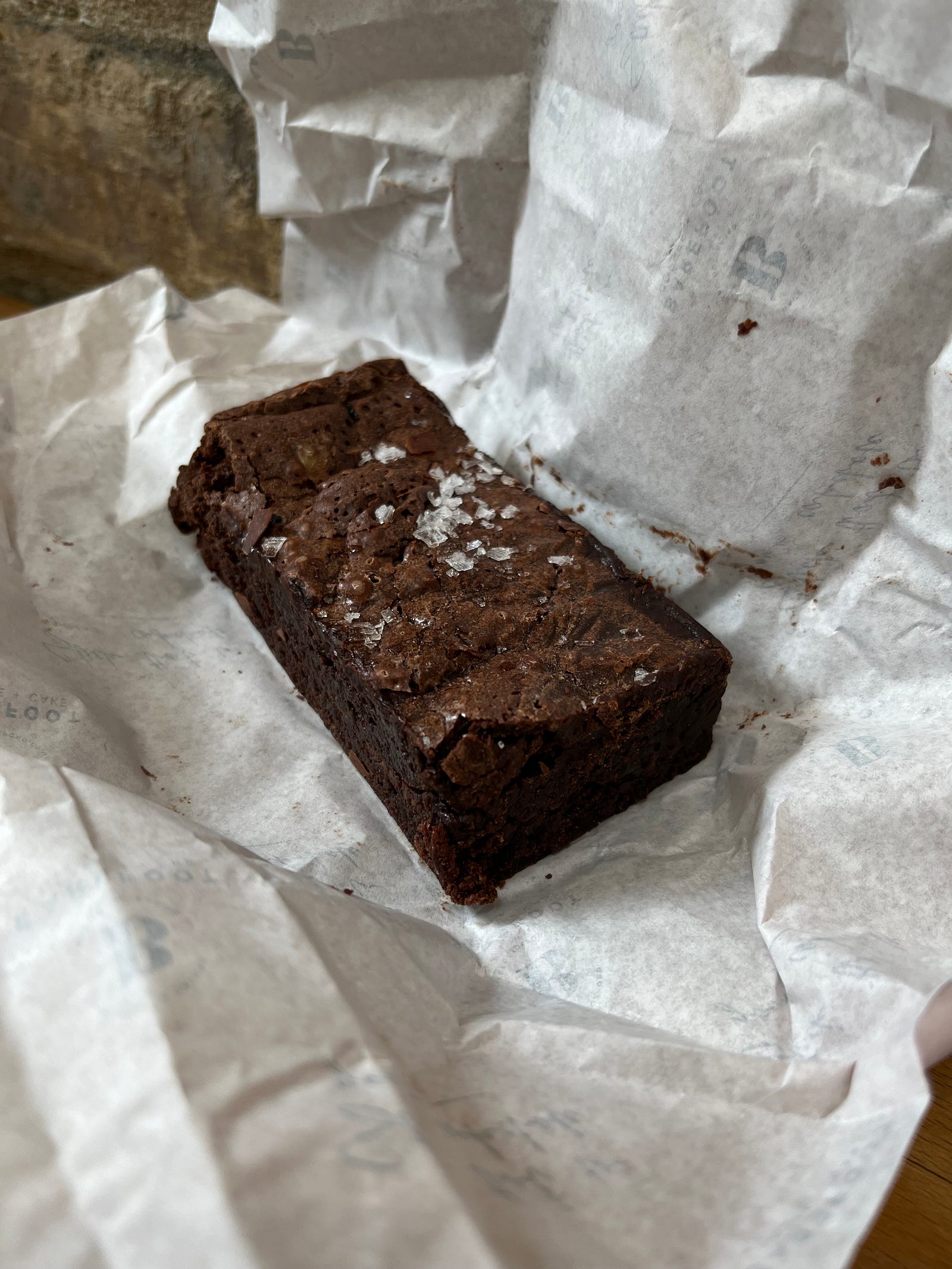Avanti Nagral is many things. She classifies herself as a Rory Gilmore, an older sister, a pink flamingo, Taylor Swift’s album ‘Lover’, and a Gryffindor, but primarily I would describe her as a changeling. Eternally balancing on the precipice between worlds, Avanti embodies what it is to be a multi-cultural, feminine, and educated woman in this century- an Indian Hannah Montana for her adoring fans.
Avanti’s dual nature began at her birth. Born in Boston to her Indian parents, culturally Avanti has always tiptoed on the tightrope of what it is to be both Indian and American. Dual-national kids inevitably must learn how to balance being ‘half’ something- and it can be isolating. Avanti spent exactly half her life in both India and the USA. She was born in Boston, raised in India, and then returned to the USA to pursue a joint degree between Harvard in social sciences and Berklee for music (the first of its kind). Now she spends summers and winters in India, and spring and autumn in the USA- her flexible career allowing her to travel.
Her music reflects the tension between dual identity, and also the multicultural beauty that comes from it. Like coal under pressure, Avanti produced diamonds in her music. As a result of her Indian heritage and Christian schooling experience, her music incorporates both Indian classical music and western gospel music. Avanti grew up in a religious household of doctors- and the influence of both science and religion had instilled a belief in her that there was more to the world out there, even if it cannot be boxed into any organised religion. The Indian music is influenced by her now 90-year-old guru, who taught her about spirituality after training to be a lawyer- proclaimed a ‘badass’. Avanti’s music is her communion: it is a conversation with girlhood, with identity, with romance, and with acceptance. It is growing to love yourself as a divine whole and treating the world with reverent kindness.
She speaks in a soft, lilting American accent- sounding almost in tone and vocal bounce like a Disney princess. Her laugh was a delightfully ringing bell, evident joy in her crinkling eyes as she threw back her head of lush, dark hair. Avanti was genuinely a lovely person- there was an empathy and passion for what she did that was evident in her discussion with Harvee, who interviewed her for the Indian society. She has a kind and gentle heart- delicate in her movements and deliberate in her compassion, as she touched my shoulder whilst self-consciously giggling when I walked straight into a wall. She immediately jumped to self-depreciation to make me more comfortable- ‘oh don’t worry, I’m clumsy too. I can already tell we’re very similar.’
Avanti strives to be a guiding light in a dark tunnel for her millions of fans. As we toured around the Radcam for the fourth time- an unfortunate result of my staggering lack of navigational skill- she discussed her audience with me. Avanti told me: “You know, it’s difficult when you have to balance both being yourself and being this public figure. You want to guide your young audience- they grow up before my eyes- but you also want to be you.” Luckily for Avanti, unlike Hannah Montana, there’s no great discrepancy between the popstar and the ‘girl-next-door’. After bumping into a friendly viewer in Knoops, she smiled sweetly with her wide, brown eyes and asked him how he was, like she had always known him. “That’s why I kept my name.” she tells me, “Most singers assume a stage name- Lady Gaga, for example- so that you can tell where the brand ends and where [the person] begins. That’s great in its own way- it’s nice to be able to control your image and to know yourself regardless. Stephanie knows about Stephanie, regardless of how the world talks about Lady Gaga. But with me- it’s just me. I want to be Avanti Nagral when people meet me. I’m Avanti.”
Avanti’s early life was moulded by her struggle with health, as she suffered a loss of eyesight as a result of a brain virus attacking her optic nerve. In her joking comparison to Rory Gilmore, Avanti was always the soft-spoken, stellar student in school. Academically gifted in nature, and rigorous and determined in nurture, it wasn’t long before her academic capabilities came to define her. “As an adolescent, we tend to look for boxes to categorise ourselves into, to understand ourselves and the world around us. As a teen, I knew myself as the student, and the hard- worker- a little bit of a nerd…”
Waking up one night for a glass of water in her early teens, Avanti felt a niggling worry in the back of her mind when she struggled to see. Turning on the light in her bedroom- assuming that her eyes hadn’t adjusted to the dark- Avanti panicked. Stumbling her way blindly, clumsily feeling along the walls of her home in Bombay to her parent’s bedroom, Avanti cried out to her parents. Groggy and sleep-clouded, her parents dismissed her panic over her lack of sight.
‘Go back to bed, Avantu.’
‘But mami- I can’t see!’
‘That’s normal- most people can’t see in the dark. And I’m tired. And I have a twelve-hour
shift tomorrow. Go back to bed’
After heading back to her room, Avanti called her grandfather (conveniently a neurosurgeon) to assess the damage. She plopped cross-legged onto her bedroom floor and squinted at her phone in the warm light of her bedroom, forcing herself through the fog to dial those little, worn numbers. They chirped as her fingers found them, out of fumbling familiarity more so than vision.
‘Nana, I can’t see.’
‘What, at all, child?’
She held her phone away from her ear and cringed- he hadn’t quite gotten used to the appropriate volume for telephone conversations.
‘Only a little. It’s much worse than it was yesterday.’
‘Hmm. Okay Avantu. In the morning, I’ll tell your Ma to bring you in for an eye exam.’ He spoke in overly loud, reassuring tones, and then mumbled more quietly to himself (but at the average volume for phone talks) ‘such a sudden loss can’t be good’.
It wasn’t good. Avanti had gone essentially blind. Coming back from the diagnosis, Avanti collapsed on her childhood bed and curled up in foetal position. After a couple minutes, she wiped her eyes with the sleeve of her hoodie and found her way to her desk, leaning on surfaces and feeling the ridges of her cream, plaster walls. She remembers sitting down and obsessively trying to do maths.”I felt like maths would be the only thing I would know how to do. I couldn’t do English, or anything with words… anything that required reading a textbook. But maths was just numbers and intuition. I had to be able to do maths.” But the numbers weren’t adding up, to use the old cliché. Grey, lead lines were strewn over sheets of A4, thrown haphazardly over her desk. Numbers were illegible. Each time prior, the sums had lined up one by one above the diving board of the addition line and had leaped in synchronised grace to the answer. This time, they slipped in puddles, broke pencilled-in legs, and fell haphazardly towards oblivion. The crushing weight of undefinition weighed on her slim, teenage shoulders, pushing her crossed arms and heavy head towards the surface of the table. She rested her forehead on her twitching fingers and sobbed into her textbooks that had once raised her, and now let her down.
Her mother and father peaked through the crack of her postered door, looney tunes characters. Her father frowned and pulled her crying mother towards him as she leaned on his shoulder, stroking her ebony hair. Avanti tells me, “In the absence of academic validation, I sought to redefine myself. I wasn’t Avanti, the student, but Avanti, the singer.” Avanti found solace in her voice. She found shelter in the valleys of her melodies, comfort in the warmth of her tone, and challenge in the crumbling mountain of pitch she climbed. As she reached the summit of vocal control, she reassessed the world as she knew it, down below. The sky as blue as she had felt seemed so much closer and manageable, and her family waved up at her, pride glowing in their ruddy cheeks. By the age of seventeen, Avanti was renowned in her school for her singing abilities, again the perfect student after regaining her vision. Her school director encouraged her to audition for a Broadway show that was touring India.
“I auditioned for a show called Agnes of God. At the time, Broadway was very uncommon in India. People wouldn’t come to watch Western shows. I got the part as the youngest of the three leads- my character being a teen, and then the other two being a middle-aged and elderly woman. We were rehearsing one night, in my co-worker’s apartment…” The lights dimmed comfortably, flickering like fireflies in the summer evening, Avanti perched like a bird on head of the leather sofa that divided the sparkling kitchen from the plush living room. Her scene mates practiced their lines in overlapping symphony as she scrolled idly on her phone. Suddenly, social media posts were replaced with the black screen of no-caller ID. In the feeling of invincibility that accompanies youth, she picked up the phone.
‘Hello?’
‘Hello.’ Came a sinister voice from the other end of the line, snickering in foul tones to himself.
‘Who is this?’
‘I will take you down, and your whole show with it. It’s unchristian. I will expose you online, and I will have you arrested by the police.’
He hung up.
Avanti sat in shocked silence, before falling backwards in confused laughter onto the sofa.
‘What is it, Avantu?’ the middle-aged woman said, care wrinkling her straight eyebrows.
‘I don’t even know. A crazy old man.’
“I sort of dismissed him at the time- an overly sensitive, hateful man. But then it blew up on social media. It turned out, he had been posting about how our show was an atrocity and blasphemous, and how we should be censored. We expected the show to bomb- we thought only 500 people would show up. But then, opening night, there were 40,000 accompanied by police. The publicity had faced a lot of mixed reactions. People were curious. And they liked [the show].”
Avanti was hailed as an exceptionally talented, teenage sensation. But it wasn’t all sunshine-and-rainbows. “The interesting nature of celebrity in the traditional sense is that you may have grown up in a very censored world, but you have to put yourself out there. People struggle to recognise that the person and the persona are separate- to separate Miley from Hannah. Especially in my case. There’s no division between my private person and public person. I kept my name so that when I wrote about mental health, sex-ed, education, I wrote in my own name. Writing in my own name meant that people felt they knew me, and some people felt they had a right to me…
“I had a very public break-up of a relationship that lasted six years. I chose to address the breakup very publicly- I filmed myself the day after my breakup, struggling to keep it together, and then I filmed myself periodically afterwards, just to track my progress. I filmed myself a week later, and then two weeks later, and then a month later, two months later. It was nice to see myself grow. After a few months, I posted a clip from the day after the breakup to my YouTube channel…Over 100,000 people reached out to me at the time to share their vulnerability regarding similar situations with me. That was lovely. Often, they would tell me about abuse going on at home, or feeling suicidal, and I would be sad because I would be unable to help. I didn’t feel qualified. I would send them links to helplines and other services, but it was a sad thing not to be able to support those who care for you…
“On the other hand, it was also difficult because people would be really nasty online. Especially on reddit- oh, it gives me flashbacks. [She laughs]. I became a meme. The person in me was reduced to someone else’s interpretation, to entertainment at my expense. They would say awful things. They said things like ‘you have sucked white dicks, now suck mine’, called me a ‘crying whore’… I couldn’t go to a restaurant without feeling like everyone was watching me. I hated it.”
Another thing that bothered Avanti about celebrity was the change in the way people discussed her. “People used to talk about me as this ’nineteen-year-old-girl’, but as soon as I turned twenty, I was being referred to as a woman Twenty was a tough year for me- probably the toughest. You’re young, but you feel too old to be a teenager, but you also know nothing about the world. It’s a confusing time.”
Balance between adulthood and childhood is reflected in her coming-of-age song ’25’ on her album ‘QUARTER LIFE CRISIS’. “I was writing it when I was in this place of confusion. I didn’t feel like a proper adult, but my twenties were half-way done. People tend to talk about your twenties like they’re the ‘best years of your life’, and like you become a proper adult as soon as you turn thirty. I don’t think that’s true. I think we’re all just figuring it out.” The album contains 8 different songs, each song a different genre, but each “decidedly Indian”. It’s an ode to growing up in the digital age, falling in and out of love, and then
standing right back up again.







